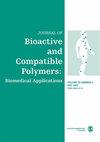Levan-based bioactive hydrogels containing herbal liposome in treating acute wounds
IF 2.1
4区 生物学
Q3 BIOTECHNOLOGY & APPLIED MICROBIOLOGY
引用次数: 0
Abstract
Hydrogels in active wound care products are 3D polymeric scaffolds that provide the desired moisture balance in the wound area with their high water retention capacity. Thanks to their biocompatible properties, flexible and porous structures, and high hydrophilic properties, they have frequently been preferred in the repair and regeneration of cells and tissues and the controlled release of bioactive substances to the target area. In this study, hydrogel structures were developed for the first time with levan produced by Halomonas elongata 153B halophilic bacteria. Extracts from Plantago lanceolata L., commonly known as a wound herb, which has medicinal importance for cell regeneration, ensuring tissue integrity in a short time and reducing infections in the wound area, were obtained and extract-loaded liposome structures were formed for controlled release into the wound area. The wound healing efficacy of the composite material developed by loading herbal liposomes into levan-based hydrogel structures was evaluated in an in vitro wound model. Thus, a natural, biocompatible, biodegradable, and functional wound care product containing herbal liposomes suitable for both clinical applications and point-of-care use has been developed. The developed bioactive hydrogels are a promising therapeutic approach for the healing of acute wounds. Graphical abstract [Formula: see text]含草药脂质体的以levan为基础的生物活性水凝胶治疗急性伤口
活性伤口护理产品中的水凝胶是3D聚合物支架,在伤口区域提供所需的水分平衡,具有高保水能力。由于其生物相容性、柔韧性和多孔结构以及高亲水性,它们经常被首选用于细胞和组织的修复和再生以及生物活性物质向靶区域的控制释放。本研究首次利用嗜盐嗜盐菌长盐单胞菌153B生产的levan构建了水凝胶结构。我们获得了被称为伤口草药的车前草(Plantago lanceolata L.)提取物,该提取物具有细胞再生、短时间内保证组织完整性和减少创面感染的药用价值,并形成了装载提取物的脂质体结构,可控释到创面。在体外创面模型中,研究了将草药脂质体装入以利末为基础的水凝胶结构中制备的复合材料的创面愈合效果。因此,一种天然的、生物相容性的、可生物降解的、功能性的伤口护理产品含有草药脂质体,适合临床应用和护理点使用。所研制的生物活性水凝胶是一种很有前途的治疗急性伤口的方法。图形摘要[公式:见正文]
本文章由计算机程序翻译,如有差异,请以英文原文为准。
求助全文
约1分钟内获得全文
求助全文
来源期刊

Journal of Bioactive and Compatible Polymers
工程技术-材料科学:生物材料
CiteScore
3.50
自引率
0.00%
发文量
27
审稿时长
2 months
期刊介绍:
The use and importance of biomedical polymers, especially in pharmacology, is growing rapidly. The Journal of Bioactive and Compatible Polymers is a fully peer-reviewed scholarly journal that provides biomedical polymer scientists and researchers with new information on important advances in this field. Examples of specific areas of interest to the journal include: polymeric drugs and drug design; polymeric functionalization and structures related to biological activity or compatibility; natural polymer modification to achieve specific biological activity or compatibility; enzyme modelling by polymers; membranes for biological use; liposome stabilization and cell modeling. This journal is a member of the Committee on Publication Ethics (COPE).
 求助内容:
求助内容: 应助结果提醒方式:
应助结果提醒方式:


